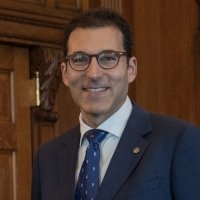In the three weeks since Ukraine formally suspended talks aimed at signing an Association Agreement with the European Union, two important facts have become clear.
First, it is now apparent that Ukraine’s president, Viktor Yanukovich, had no effective strategy to resist intense pressure against the EU deal from Moscow. The Kremlin promised big cash loans, a gas discount and debt forgiveness, while explicitly threatening to block Ukraine’s access to the Russian market and implicitly threatening to stoke separatism in regions of the country.
Second, as street demonstrations gain momentum in Kiev and other cities, it has become clear that a strong, diverse and increasingly vocal plurality of Ukrainians will not accept their country’s continued isolation from the West. The authorities have confronted street protestors with shocking violence, and have offered no significant political concessions. Yet the prospect of real reform driven by the EU association has now become a key symbol for Ukraine’s national identity.
Though these two basic dynamics may appear to confirm the cliche of Ukraine “caught between East and West,” Ukrainians themselves do not see it this way.
Yanukovich, despite the intensity of Russian pressure, did not walk away from the EU table just to please Moscow. On the contrary, his relations with Russian President Vladimir Putin are devoid of any foundation of trust or even mutual respect, Yanukovich can be all but certain that the Kremlin will throw considerable resources behind a challenger in the 2015 Ukrainian presidential elections, if not sooner.
Moreover, Ukraine is not on track to join Russia’s alternative to the EU, the Eurasian Economic Union. That would at best fuel a brief spurt of economic growth at the cost of longer term stagnation.
Meanwhile, the pro-European demonstrations have spread beyond Kiev — including to majority Russian-speaking cities in the industrial East, such as Kharkiv, Chernihev and Dniepropetrovsk. Very few protestors, save a few ultra-nationalists, would define their aspirations as being anti-Russian — for the simple reason that tens of millions of Ukrainians have family, social or business ties with Russia, and follow Russian-language media.
Indeed, ethnic pluralism and growing tolerance have been hallmarks of modern Ukraine. These are among the achievements that Ukrainians hope an EU Association Agreement can safeguard.
The protest movement appears to be an expression of support for a modern, European, democratic Ukrainian state. Embracing European values and standards will impose constraints on Ukraine’s kleptocratic elite, reducing opportunities for corrupt enrichment by state officials and strengthening protections for domestic and international business against raider attacks backed by powerful oligarchs or officials.
This reform process may be what Yanukovich most fears. Yet now that millions of Ukrainians are venting their frustration on the streets, they are unlikely to settle for anything less than a return to the path of EU integration — with real systemic reform.
Even the oligarchs, who previously backed the president’s Party of Regions, are moving increasingly in favor of the EU agreement. They see these reforms may be the best guarantee that they hold onto the wealth and influence they have already amassed.
In fact, by attempting to block Ukraine’s path to the EU Association Agreement, the Kremlin may have triggered precisely the scenario it most fears: A reawakening of the massive civil unrest that helped reverse the outcome of the 2004 presidential election and brought the pro-Western “Orange” movement to power.
The Orange Revolution achieved early victories because it channeled ordinary people’s frustrations with corrupt post-Soviet cronyism into a political force with financial support from a wide swath of the business community.
If the latest protests continue to gain momentum even as the authorities appear incapable of completing reforms and restoring the pathway to an EU association, the interests of everyone — from street protestors to Ukraine’s richest oligarchs — could align to bring about a swift and dramatic political change.
This commentary first appeared on Reuters's The Great Debate.





